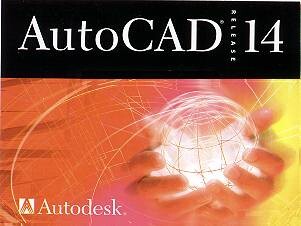I will be in the Portland, Oregon area for the June AUGI Board of Directors meeting at the end of this week. If you are local to that area, then join me and my AUGI buddies at a “Meet-Up” – check here for details.
I just completed an upgrade of my blog to WordPress 2.5.1
It was fairly pain free.
 Have you heard of Sketchbook Pro?
Have you heard of Sketchbook Pro?
It is the newest Tablet PC tool from Autodesk. You can sketch, annotate, and present your visual ideas anywhere on a Tablet PC or Wacom Tablet.
Here is more info from the Autodesk site.
And a free trial offer
Continuing the flow of posts on Thought Leadership…

We have covered the introduction of the topic and how some may want to gain voice in the industry that they are working or at the office/firm they are with. The reason for this is to gain some level of input into the conversations that surround CAD. The second of the series was speaking. By just raising your voice you start to become heard. Little by little, people start listening. That is, if you have something to say.
This post is about joining the conversations on CAD…
I think that in the beginning you just add your voice to the many other voices that are in the conversation. First – find the conversations. They are happening all around you. Just listen…
Conversations happen within your company about CAD issues all the time . CAD is one topics that every project has to deal with. CAD conversations happen every day. If you take the time to find them and join them, you will begin to have impact.
As I am walking around, I hear people talking about CAD issues or asking each other questions on CAD standards. I tend to listen for these things. There are buzzwords that my ears are tuned in on. CAD buzzwords. I just hear them. When they pop up in conversations – even several desks away, I hear them. Words like Layer, Standards, Plotting, LISP, etc. They may be people talking as the pass my office. Or people talking in the break room. I just hear them. I am not eavesdropping, I just hear them. When these words come up, I start to listen.
I listen from a distance and take stock of the persons demeanor and stance. Are they angry? confused? curious? These are signs that they are looking for answers. Most of the time when I overhear these words it ends up in a troubleshooting and support conversation. This is not really thought leadership. What does happen is that these conversations will turn sometimes to what a perfect CAD world should look like, or how we can improve things. This is the beginning of a thought leadership conversation.
I also look for crowds of people that I know are the adventurous CAD super users. When these people are together, or standing at someones desk for an extended time, I start to perk up. I may wonder over and join the conversation or just try to listen from a distance. Am I intruding? I hope not. I try to do it without being offensive or corrective. If I join a conversation and lay down some bottom line rule or end game comment, then yes, I have interrupted and disrupted their conversation. The conversation is still theirs in the beginning. You have to be invited in. If you have practiced how to join conversations, then this will be easier. If not, then you need to start working on your skills of joining existing conversations.
Assuming that you have joined and not offended, the next step is to add your opinion to the mix. You need to judge how the conversation is flowing. Conversation that are looking for answers need just that. They need you to provide answers or options. Conversation that are brainstorming, or just dreaming of a rosy future are areas that thought leadership opinions can be offered. Read the conversation before you join in. Another type of conversation is a complaint session. Your goal in those is to listen for the root of the problem and then steer it toward a positive outcome. What can be done to make things better.
If the conversation can be improved by adding some thought leadership then by all means toss your opinion into the mix.
I attended the Autodesk Experience Tour in Anaheim, California yesterday. It was very well attended, but I don’t really know the extent of the attendees becasue the event shared lobby space with another conference. All I know is that every room was packed.

The event was broken into tracks for AE, Civil, Manufacturing and GIS. Each track had breakout sessions that focused on the tools that each sector would use from the Autodesk offerings. I attended the AE track. They discussed AutoCAD, ACA, Revit and Max Design, showing how they interoperated and communicated with each other. Seeing these tools in action, presented by some of the best from Autodesk, provided a quick glimpse into the way Autodesk is headed.
It was good to catch up with some of the So Cal faces that attend these things. I ran into Jim Balding several times. Scott Davis and Amy Fietkau from Autodesk presented in the AE track. I got the chance to speak with Lynn Allen before she presented her Tips and Tricks. They passed out the AutoCAD 2009 Tips & Tricks booklets also. Lunch was provided by the local resellers and the lines were out the door for each of them. My old KETIV Technologies buddies (Ken, Kanwar and Anthony) had the Teacher of the Year present on technology use in the High School classroom. US CAD (where I had lunch) presented on IPD (Danny, Daniel, Steve Bennett and more) and the interaction of all the tools related to that. Kelar was there (Ed) , as was Microdesk (newest member John Barkwell) and CVIS (Shobhit). Every local reseller had a team on site.
There was an Expo hall, but I did not really get much chance to see what was there… oh well.
It was an impressive day, well crafted and coordinated. If you get the chance in your area – you should attend.
I continue the topic of becoming a Thought Leader…
Several areas that you may get involved in, when viewed properly, combine into a mixture that can place you at the top of your field and garners the respect of outsiders. These areas include speaking, writing, industry volunteerism, conference attendance, and having a web presence.
Let’s look at speaking…

Having a voice in an industry requires a certain amount of speaking at events and meetings so that your voice can rise above the din of conversations that swirl around any given issue. Getting to a point of being invited to speak is a long and hard road. You have to prove yourself in many different arenas. It takes years of building, one engagement at a time, until you are sought out for these roles.
Speaking starts by just adding your voice to the others at any event that offers this kind of interaction. If you are at a user group, start by asking some questions. After a while start answering some that are tossed out to the group. If you don’t have this opportunity then talk to people after the event. Talk to the speaker. Get to know the leaders. Just start small and work up from there.
Most users start by talking about how to use the software. This is a chance to share technical expertise. Learn all you can and then share it.
I have been speaking to the issues surrounding technology use and CAD for over 15 years in small and large venues. These events thrust me into the spotlight and allow me to bolster my firm’s reputation and my own. It is a balance of paid and unpaid speaking that I do. When paid, the rate is very modest and usually does not adequately cover the time and effort I put into developing and preparing the topic. You are not going to get rich by doing these things. When the events are unpaid, then the fee for the event is usually waived and I can go for free. I am a recurring faculty member of Autodesk University, which is paid, and at most two other events during the year, which are most likely not paid.
Some of you may remember the commercials that would show people bending their ears to listen to Mr. Hutton? “When E.F. Hutton speaks, people listen,” was the slogan. It was the investment advice that was being given that everyone wanted to hear. While you may not be giving advice on stocks, bonds and investments, you are giving advice on CAD. Some of us wish that others listened more when we spoke. Some wish that those on our project would listen. Some wish that those in our office would listen. Some of us wish those in our firm would listen. And some wish that those in your industry would listen. When others listen, you become what is known as a “Thought Leader“.

Gaining a voice in your industry takes many years and includes many areas of exposure. Sometimes these efforts can be arduous and unfruitful, but often they are rewarding both for your company and for you.
The years of building and maintaining a reputation in your field can involve diverse areas of interaction with clients, vendors, coworkers, consultants, organizations and the media. Juggling the continual demand on your time to create, nurture and maintain a position of leadership can be taxing. You may often work many hours of unpaid, unnoticed and unrewarded personal time to expand your influence.
Knowing the exact blend of what it takes to become a thought leader is a delicate dance at best. Protecting your reputation and securing the respect of everyone is critical. The very breath of unethical behavior or conflict of interest can start hairline cracks in your edifice that, if not corrected, can topple the fragile house that you have built. Being a thought leader will expand your personal stature and the stature of the firm or groups you represent. It is a combination of both, you and any group you represent. If one falters, the other suffers. They are bound together and both profit from your efforts.
The possibility exists for some of these efforts to be seen with a negative slant that some might engender when not fully understood. It may be that they do not fully understand a perspective that you have taken or that the appearance of conflicts exist between your work within your firm and outside endeavors. To put this to rest, you must be fully devoted to your firm or group and advance their status. You in no way want to bring a bad light on your firm, your clients or your work.
Several areas that you may get involved in, when viewed properly, combine into a mixture that can place you at the top of your field and garners the respect of outsiders. These areas include speaking, writing, industry volunteerism, conference attendance, and having a web presence. I will outline these efforts and define the positive nature of each in the next few posts.
Autodesk loses court battle – for now…
Federal Judge Upholds Right of Vendor to Sue Against Anti-Consumer Copyright Claim

eBay Vendor Claims Right to Resell Used Copies of Products from Software Company
AutoCAD 14 sold on ebay…
WASHINGTON, D.C. – A California software company’s “license agreement” it includes with copies of its products does not prohibit buyers from reselling the software on sites such as eBay or anywhere else, a federal judge ruled today. (05/21/2008)
“A federal district judge in Washington State handed down an important decision this week on shrink-wrap license agreements and the First Sale Doctrine. The case concerned an eBay merchant named Timothy Vernor who has repeatedly locked horns with Autodesk over the sale of used copies of its software. Autodesk argued that it only licenses copies of its software, rather than selling them, and that therefore any resale of the software constitutes copyright infringement.”
“The U.S. District Court in Seattle last week issued a decision denying a motion by Autodesk to dismiss a lawsuit filed by Timothy Vernor. Vernor’s attempts to sell used copies of AutoCad on eBay had been repeatedly interrupted by Autodesk’s DMCA takedown notices. Vernor, represented by Public Citizen and Seattle attorney Michael Withey, had sued to force Autodesk to concede his right to sell legally acquired copies of the software under the First Sale doctrine of copyright law. Autodesk’s motion to dismiss argued that the AutoCad EULA prohibited Vernor from re-selling the software, but Judge Richard A. Jones ruled in Vernor’s favor and the case will proceed.”
How social are you? well at least online…
I was curious about some of the social sites and how people are connecting. Let us know if you are “connected” to any of these. Maybe you just check them out once in a while or are dedicated to making them part of your regular habits. Either way – which ones are you using?
Take the June Poll on the left sash.

